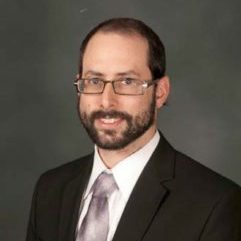Shimon Hatzadik was the last surviving members of the Kenesses Hagedolah. He was a High Priest and a respected leader. His task was to usher in a non-prophetic era. The previous generation had assured us that we could keep the Torah alive through patience, education, and safeguards; Shimon Hatzaddik’s mission was to tell us which ideas to focus on and emphasize.
The Medrash tells us that Alexander the Great bowed before Shimon Hatzadik. Perhaps Alexander understood that Shimon Hatzadik embodied the pinnacle of philosophy and humanity whiule at the same time harnessing it for spiritual purposes.
Shimon Hatzadik taught that the world is supported by Torah, Avodah (Sacrifices and prayer), and Gemilas Chasadim (kindness). Each of these reflects a defining trait of our forefathers. Avraham excelled in and taught the world about kindness. Yitzhak is most often noted for his prayer. He Himself was a sacrifice. Yaacov was a “dweller of tents”, constantly found in the study of Torah. Perhaps Shimon Hatzadik listed these traits out of patriarchal order because the trait of Torah Study is most accessible to us. Alternatively, Shimon Hatzadik is telling us that even if we can’t relate to G-d through Torah study, we can still relate to him through prayer. Those Jews who embrace neither Torah nor prayer can still relate to G-d through the trait of Loving Kindness.
The final Mishna in the first chapter of Avos contains a quote from Rabban Shimon ben Gamliel. Rabban Shimon ben Gamliel tells us that “the world exists on three things: Justice, Truth, and Peace”. He seems to argue with the three tenets of Shimon Hatzaddik in our Mishna.
Rabbi Yaacov Baal Haturim (1270 – 1340) wrote the basic Jewish Legal text for Judges and entitled it “Choshen Mishpat”. He introduces his work by explaining that while the world was created for Torah, Prayer, and Kindness, it continues to exist only because of Justice, Truth, and Peace. He bases this on Rabbeinu Yonah and encourages Judges to recognize their role as partners with G-d in the continued existence of the world.
Rav Yosef Karo, author of the Shulchan Aruch, was unsatisfied with this approach. If Torah, Prayer, and Kindess were sufficient reasons to create the world, why wouldn’t they justify its existence as well?
Instead, Rav Yosef Cairo explains the contradiction between Shimon Hatzaddik and Rabban Shimon ben Gamliel by making the following sobering point: Shimon Hatzaddik lived in the times of the Holy Temple; he followed on the coattails of great scholars and prophets. He could truly instruct his generation in Torah, prayer, and kindness. Rabban Shimon ben Gamliel, on the other hand, led a generation that had been exiled. The Temple had been destroyed. We are no longer capable of true Torah, Prayer, and kindness. We just do the best we can. We need to suffice with “Justice, truth, and peace”.
The Bnei Yissoschar (based on the Megaleh Amukos) refuses to accept this stance. It is precisely the Torah, Prayer, and Kindness of Shimon Hatzaddik that we have access to in each and every generation. The world was created for Torah, Prayer and Kindness. They were the message upon which Avraham, Yitzchak, and Yaacov based their teachings, and they were the three traits that Shimon Hatzadik used to inspire a generation that had lost hope.
In the Torah we find that Avraham welcomed his guests by offering them עגת or cakes. When we left Egypt we also ate Matzos that are referred to as עגת as well. The word עגת is an acronym for Torah, Avodah, and Gemilas Chasadim, for it was those three ideas that Avraham taught his guests and it was those three ideas that we focused on as we left Egypt.
The Baal Shem Tov is known to have pursued three careers in his short lifetime. He would lead children to school to study Torah, He would lead congregations in prayer, and he would slaughter and inspect livestock which was distributed to the poor. It is said that he chose these three areas in order to inspire Jews in Torah, Prayer and Kindness.
Even where Jews have nothing but kindness to connect them to G-d, they will stay connected. This is G-d’s promise to Avraham that the blessing of the forefathers (in Shemona Esrie) ends with Avraham. Even when all connection is lost, we have an unbreakable bond based on the trait of kindness that we inherited from Avraham.
The Minchas Elazar makes a frightening point. The three traits of Rabban Shimon ben Gamliel are Justice, Truth, and Peace. The world may exist on these three traits, but they cannot be faked. False Justice is not justice, Falsehood is not truth, and false friendship is not peace. The directives of Shimon Hatzadik on the other hand,, can be faked. We can study Torah even if we do not feel inspired, we can pray even if we don’t mean it, and we can perform kindness even as we carry a grudge.
The Beis Yosef felt that Shimon Hatzaddik’s words are beyond our reach today. The Bnei Yissoschar taught the opposite. It is precisely the words of Shimon Hatzadik that we can access today. They worked for Abraham and they can work for us. Perhaps if we can “fake” Torah study, Prayer, and kindness of creation, they will grow upon us until we are able to exercise the Justice, Truth, and Peace upon which the world continues to exist.
—
Devarim Nechmadim is a commentary on the first five Mishnayos of Pirkei Avos by Rav Tzvi Elimelech of Dinov. This essay is loosely based on his work as well as on the classes and writings of my father, Rav Yaacov Haber , Shlita.


0 Comments